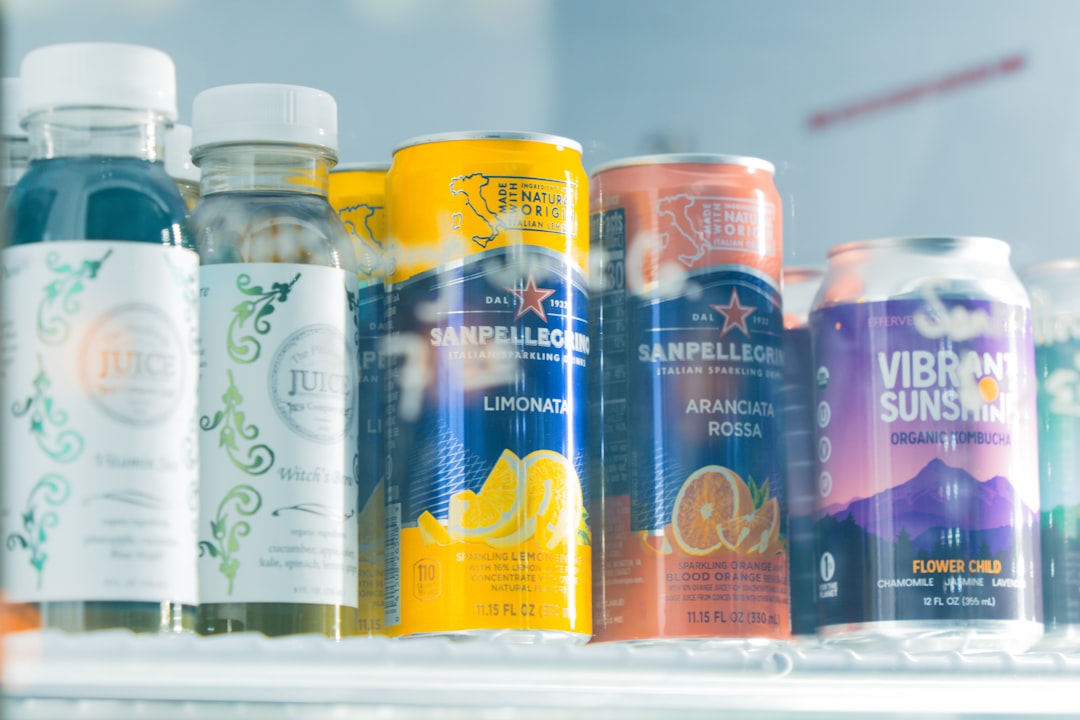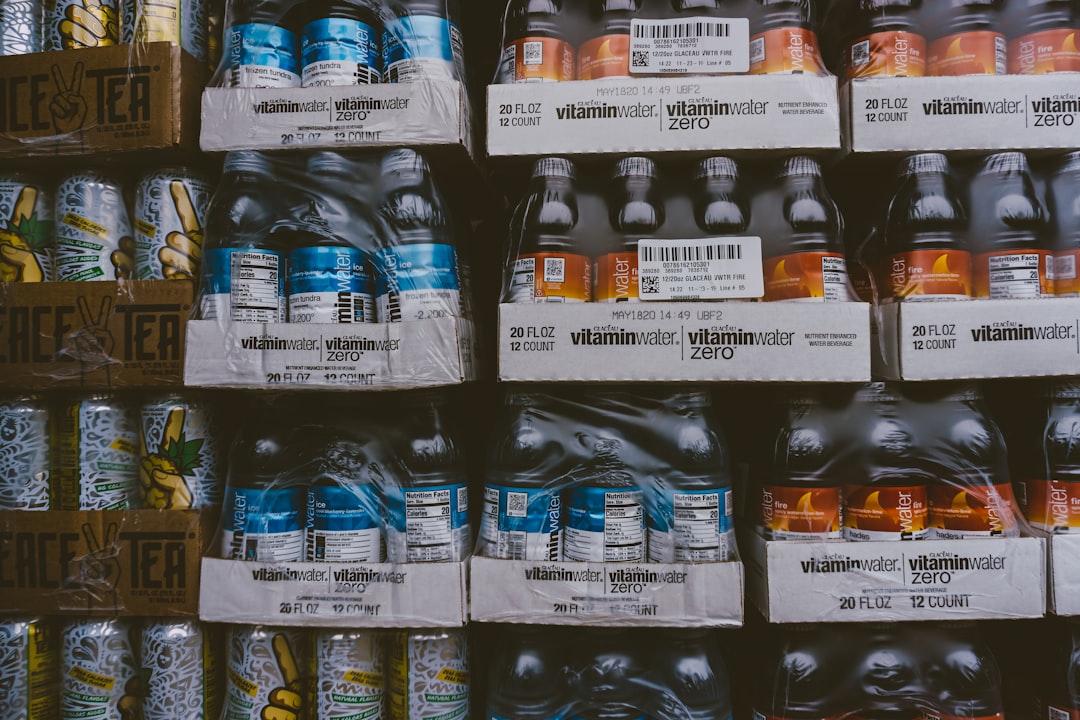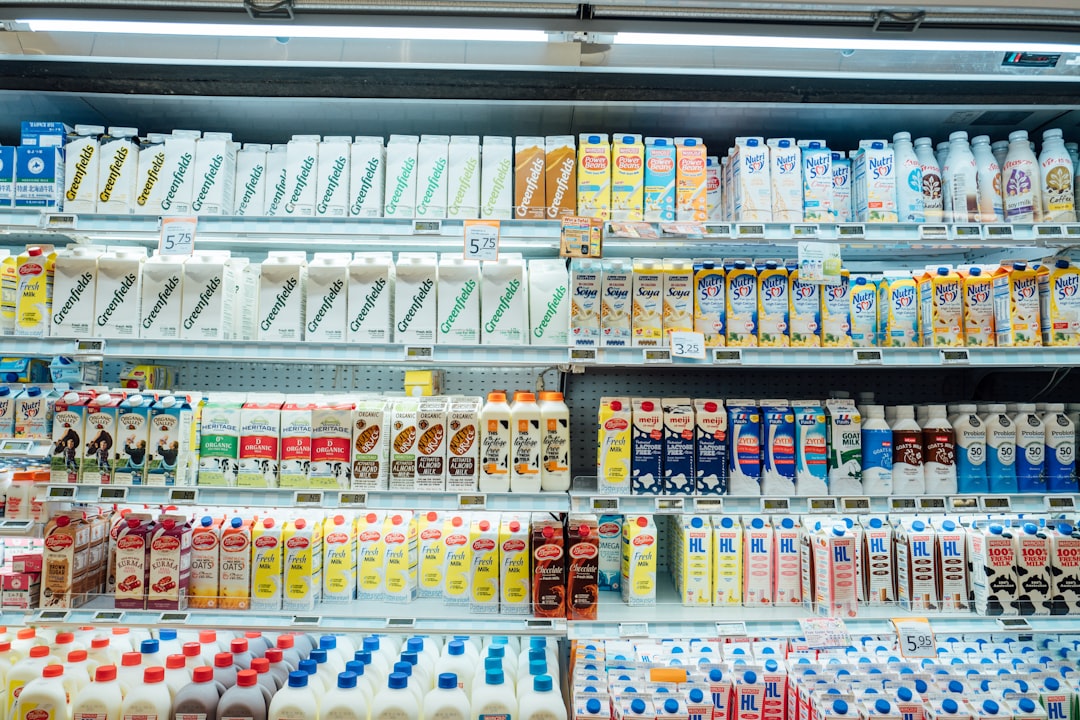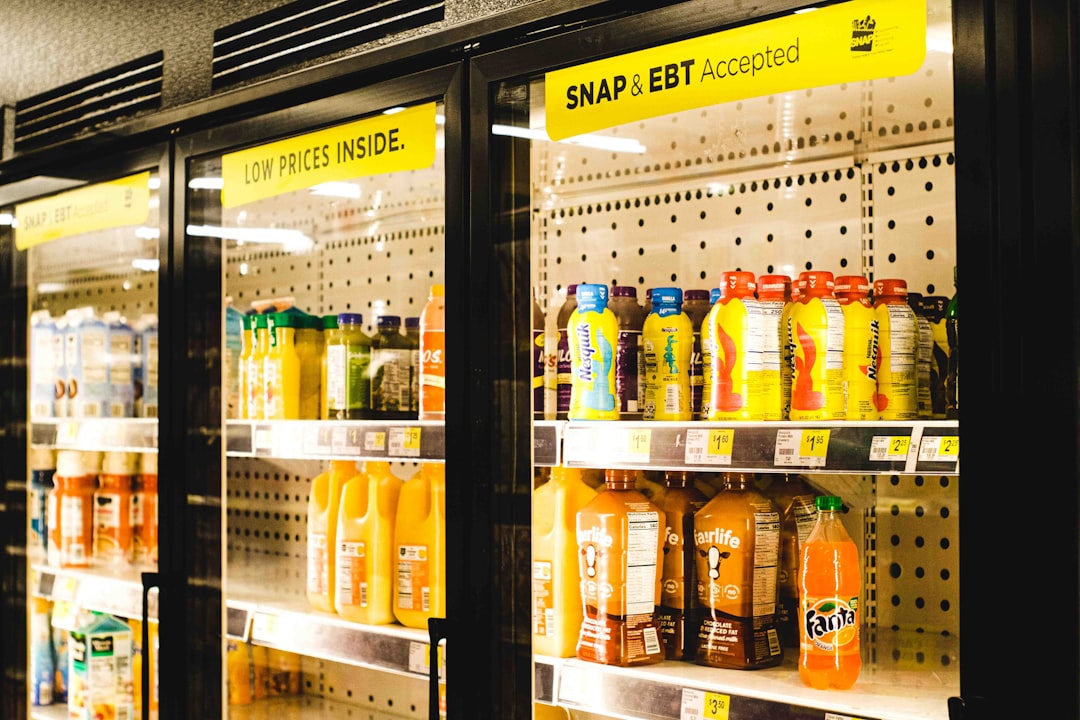

Engage prospects with a scan and streamline customer engagement with FREE QR code marketing tools by Sona – no strings attached!
Create a Free QR CodeFree consultation

No commitment

Engage prospects with a scan and streamline customer engagement with FREE QR code marketing tools by Sona – no strings attached!
Create a Free QR CodeFree consultation

No commitment
QR codes have become a strategic powerhouse in bridging offline engagement with online action. For dehydrated food suppliers, QR codes represent an effective way to enhance food packaging value, boost traceability, and foster customer loyalty without technical barriers. The growing demands on food safety, evolving regulations, and the need for direct access to source and sustainability information make it essential for suppliers to capture every opportunity to inform and engage customers, such as the FDA Food Traceability Rule.
Whether maximizing shelf space impact or overcoming the frustrations of anonymous consumer interactions, QR technology—backed by platforms like Sona QR’s product overview—makes each product interaction more transparent and actionable. When critical details are a scan away, suppliers provide up-to-date information, and every scan becomes a chance to drive business value.
As consumer demand grows for freeze-dried foods, long shelf life products, and greater supply chain visibility, connecting packaging with digital experiences is crucial. QR codes allow dehydrated food suppliers to move from static materials to personalized digital journeys, delivering nutritional information, real-time feedback, and easy access to sourcing data. An effective QR code strategy sets your brand apart, deepens engagement, and ensures agility across the supply chain. Explore CPG-specific tactics in Sona QR’s CPG strategies.

For many dehydrated food suppliers, missed follow-ups and fragmented data limit results. A potential buyer scans a catalog, a retailer needs a Certificate of Analysis, or a consumer wants rehydration guidance, yet none of those signals are captured or routed in real time. QR codes bridge the gap between physical packaging and digital engagement so your team can meet buyers in the moment, capture first-party data, and deliver the exact resource they need. See the Knorr case study for how farm-to-fork traceability drives engagement and market share.
QR codes also replace outdated analog tasks. Instead of printing brochures that quickly go out of date or asking customers to fill out paper forms that must be manually keyed in, a scan can trigger an instant, trackable digital journey. That might be a batch-level traceability lookup, a reorder form, a B2B sample request, or a video with step-by-step rehydration instructions, all while logging who engaged, where, and when—reflecting the broader traceability trend.
How to get started:
This approach helps growth marketers, operations leaders, and owners replace outdated workflows, deliver modern customer experiences, and drive measurable business impact. Platforms like Sona QR support the full lifecycle: generation, design, deployment, analytics, and CRM integration, so every scan becomes a trackable signal you can use to strengthen engagement and traceability.

Dehydrated food suppliers often operate across blended B2C and B2B channels, from retail pouches to bulk food service packs to private-label lines. Once a product leaves your facility, visibility into who buys, how they use it, and what they need next drops off. QR codes restore that visibility. They turn every label, mailer, and sell sheet into a measurable digital touchpoint that informs both marketing and operations. For producers, Penn State’s guide to agricultural marketing shows practical, QR-driven engagement tactics. For measurement across channels, see Sona’s blog post titled Offline Attribution Guide.
They also lower friction for critical tasks. A buyer does not want to hunt for allergen disclosures or certification documentation, and a consumer should not need to download an app to watch a rehydration tutorial. A single scan removes that friction and drives faster, more confident decisions.
QR codes solve core challenges by:
In practice, this means the materials you already produce become smarter. Think case labels for food service with a “Scan for allergen and spec sheet” code, retail-ready pouches with “Scan for origin and recipes,” or direct mail samples for buyers with “Scan to request pricing.” Each one becomes a measurable moment of engagement.

Different goals require different QR code formats. A robust QR program uses multiple types to match the buyer’s context and the action you want them to take. For dehydrated food suppliers, the most common formats concentrate on education, verification, and reordering.
Dynamic QR codes are ideal when your content may change or you need analytics for retargeting. Use static codes for permanent resources like a general product PDF that will not require updates for an extended period. With Sona QR, you can manage both in a unified dashboard, apply UTM parameters, and integrate scan data with CRM systems for downstream workflows.

Growth comes from putting QR codes wherever engagement naturally happens. In dehydrated foods, that includes primary packaging, bulk cases, trade collateral, and partner materials. Each placement can be tuned for a specific goal, whether it is education, lead capture, or reordering.
Map your offline touchpoints first. Identify where buyers have questions, what information they need to move forward, and how you can reduce friction. Then give each surface a purpose-built code and a clear call to action.
Key growth points are:
By making every offline asset a gateway to the right digital experience, you ensure consistent, informative buying journeys that drive conversions and repeat purchases.

Complex supply chains and long shelf lives amplify the need for transparency and clear instructions. QR codes meet that need while also supporting marketing and sales objectives across retail, e-commerce, and food service.
Below are three high-impact use cases that match common customer interactions:
These use cases bring measurable, account-level granularity to both B2B and retail segments. They also create a repeatable framework for adding new SKUs, seasonal campaigns, or partner programs without redesigning your entire packaging system.
Each scan is a self-declared signal of intent. A consumer who scans for recipes is interested in usage and flavor exploration. A procurement manager who scans a bulk case for specs and allergen details is likely in evaluation or reorder mode. By deploying multiple QR codes across touchpoints, you can segment audiences automatically and tailor your follow-ups. For deeper context, read Sona’s blog post titled Intent Data Guide.
Start by defining your buyer groups. In dehydrated foods, you will likely segment retail consumers, food service buyers, outdoor and emergency prep customers, and private label prospects. Tag codes by SKU, channel, and stage in the journey so you can personalize messaging and offers without guessing.
Here is how to put this into practice:
With Sona QR, each code becomes a smart entry point into your funnel. You can view performance by asset or SKU, connect scans to identities over time, and activate targeted remarketing based on real behavior.
QR codes are connectors across offline and digital campaigns. When you add them to the materials your audience already uses, you gain real-time engagement and a data layer that was previously invisible. That data allows you to coordinate messaging and offers across channels, improving consistency and conversion rates.
Dehydrated food suppliers often rely on a blend of retail packaging, B2B catalogs, trade show presence, and field sales. QR codes unify those touchpoints so you can measure what works and scale it efficiently.
Examples tailored to dehydrated foods:
Treat QR codes as the offline onramp to your digital marketing engine. With a centralized platform like Sona QR, you can manage all your codes, monitor performance, and sync scan data to your CRM and ad platforms for coordinated campaigns.
Many QR initiatives stall because goals are vague or measurement is incomplete. A simple, disciplined checklist keeps your program focused on business outcomes, not just scans. Begin with a clear objective, select the right QR type, and deploy in the environments where your buyers already interact with your brand.
Each step below includes practical guidance for dehydrated food suppliers. Use it to launch your first campaign or to formalize a program you already started.
Define one primary goal for the campaign such as batch verification, B2B sample requests, retail recipe downloads, or food service reorders. Select a use case with high buyer value so the call to action is compelling and the conversion path is obvious.
Align the code’s purpose with a business outcome you can measure. For example, a “Scan for COA” code should reduce support inquiries and accelerate retailer approvals. A “Scan for recipes” code should increase repeat purchase rate and time-on-site. For B2B, a “Scan to request pricing” code should drive qualified leads with the right SKU tags.
Choose static codes for fixed destinations that will not require updates such as a long-lived PDF spec sheet. Choose dynamic codes when you want analytics, retargeting, or the ability to change destinations without reprinting. Most performance-oriented campaigns benefit from dynamic codes.
If you plan to segment and remarket based on scans, dynamic is essential. Platforms like Sona QR provide device detection, UTM tagging, and destination editing so you can iterate quickly and preserve a consistent code across print runs.
Design for scannability first. Use high contrast, a quiet zone around the code, and sufficient size for the environment. Add a short, benefit-led CTA near the code such as “Scan for origin and COA,” “Scan for recipes,” or “Scan to reorder.”
Test across devices and conditions. Scan at different angles, distances, and lighting. Verify that the destination loads fast, reads well on mobile, and matches the promise in your CTA. Include your logo and brand colors judiciously, but do not compromise contrast or readability.
Place codes where scanning is natural. For dehydrated foods, priority surfaces include stand-up pouches near the nutrition panel, corrugate cases for food service, shelf talkers at retail, trade show signage, and B2B mailers. Match the content to context. A shelf talker might link to recipes and coupons, while a case label links to allergen and spec sheets.
Pilot in a few locations or SKUs to validate engagement, then scale. Use unique codes per channel or location to attribute performance accurately. For example, create separate codes for retail displays vs. trade show materials so you can compare results.
Instrument your campaign for learning. Use a platform like Sona QR to track scans by time, device, and location. Measure downstream actions such as form submissions, downloads, and reorders. Add UTM parameters to attribute traffic in your analytics tools.
Optimize weekly. A/B test CTAs, landing page headlines, and content modules like recipe formats or spec sheet layouts. Use insights to refine creative, reallocate placements, and update dynamic destinations so every scan contributes to tangible results.
Tracking should go beyond counting scans. To understand impact, you need to connect a scan to the visitor’s intent, the content they viewed, and the business outcome such as a reorder, a sample request, or a compliance approval. That linkage turns QR engagement into pipeline and revenue insights.
Most suppliers struggle because data is fragmented across print vendors, web analytics, CRM, and sales outreach. A unified view brings context to each scan and reveals patterns by SKU, region, and buyer type. This helps you prioritize resources and refine both marketing and operations.
Best practices:
With Sona QR for capture and Sona for attribution, you can unify scan events with web visits, ad clicks, and CRM activity. Sona is an AI-powered marketing platform that turns first-party data into revenue through automated attribution, data activation, and workflow orchestration. Learn more in Sona’s blog post titled Revenue Attribution Importance and dive into account identification with Account Identification Guide.
Scaling success is about doing more of what works and removing friction where scans drop off. Start with placements and messages that already show traction, then replicate them across SKUs, regions, and channels. Use automation to keep the journey moving so a single scan becomes a series of valuable touchpoints.
Consider the physical realities of your products. Pouches are flexible and can wrinkle, so place codes on flat zones and use protective varnish. Case labels face abrasion, so choose durable printing and test scannability after handling. These details have a direct impact on adoption and ROI.
Selected best practices:
You can generate and track your first QR codes in minutes with platforms like Sona QR. Start with one high-impact use case, measure results, and expand confidently once you have a winning pattern.
One organic dehydrated food brand launched a QR-enabled recipe library and placed “Scan for chef-tested recipes” on the front of retail pouches. Over a six-month period, the brand saw a 24 percent lift in repeat purchases for SKUs with the code, plus a notable drop in support tickets related to preparation. The data also revealed which recipes drove the most engagement, guiding content investments.
Emergency food suppliers have adopted QR codes for instant lot validation and compliance. By printing “Scan for COA and shelf life guidance” on buckets and cartons, they give consumers immediate assurance and a direct path to replenishment. Scan analytics surfaced regional demand surges tied to seasonal weather events, helping operations rebalance inventory and marketing adjust campaigns.
A B2B-focused dehydrated ingredient supplier ran a UGC and feedback campaign tied to a trade show. Attendees who scanned a booth display received a digital sell sheet and an invitation to share application videos for a reward. The campaign generated a pipeline of qualified accounts, segmented by product interest and application type, while the videos became valuable sales collateral.
Industry leaders also display QR-linked sustainability and sourcing certifications at the point of sale. Shoppers can verify origin, farming practices, and worker welfare information before purchase. Those scans feed into remarketing audiences, allowing the brand to follow up with educational content and targeted offers based on the products viewed. For broader context on QR applications across sectors, see this overview of key uses of QR codes.
As you scale, refine the details that maximize scan rates and trust. Make your CTA specific and benefit led, keep destinations fast and mobile friendly, and maintain alignment between the promise near the code and the content delivered. Small improvements in clarity and load time can produce outsized gains in conversion. For more best practices, review Sona QR’s post on QR codes in marketing.
Avoid common errors that erode performance. Low-contrast codes, curved or wrinkled placements, and destinations that default to a generic homepage all depress engagement. Ensure your dynamic code destinations are current, compliant, and relevant to the user’s context.
QR codes are more than a digital shortcut. They are a foundational strategy for dehydrated food suppliers to close engagement and data gaps, strengthen traceability, and create seamless buyer journeys. When you weave QR experiences throughout packaging, trade materials, and partner touchpoints, every product becomes a trackable, interactive asset that fuels loyalty and supply chain agility. The result is a connected approach where each scan generates actionable insights for both operations and marketing, translating real-world interest into measurable growth. Start creating QR codes for free.
QR codes have revolutionized the dehydrated food suppliers industry by transforming static packaging into interactive, measurable marketing tools. They enable suppliers to enhance customer engagement, provide instant access to product information, and build trust—all while capturing valuable data to optimize future campaigns. Imagine knowing exactly which packaging designs or promotions drive repeat purchases and brand loyalty in real time.
With Sona QR, you can effortlessly create dynamic, trackable QR codes that update instantly without the need for costly reprints. Connect every scan to meaningful outcomes like customer acquisition and enhanced user experience, turning your packaging into a powerful sales channel that adapts as your business grows. Start for free with Sona QR today and make every package a gateway to deeper customer relationships and increased revenue.
QR codes enhance packaging value, improve traceability, foster customer loyalty, provide instant access to product and sourcing information, and enable measurable offline-to-online engagement.
Suppliers can use platforms like Sona QR that support the full QR code lifecycle including generation, design, deployment, analytics, and CRM integration for seamless management.
Common formats include web links to product pages, lead capture forms, feedback surveys, batch or lot data access pages, and SMS or email pre-fill messages.
QR codes provide instant access to batch-level certifications, Certificates of Analysis, allergen details, and compliance documents, enhancing transparency and traceability.
The article does not specifically address environmental impacts of dehydrated food production.
By linking QR codes to up-to-date batch information, certifications, and audit references, suppliers enable real-time verification and faster compliance responses.
Trends include using dynamic QR codes for real-time updates, integrating traceability data on packaging, and connecting physical products to personalized digital experiences.
They use QR codes to replace analog tasks, enable dynamic content updates, capture first-party data, and create personalized customer journeys linked to packaging.
QR codes offer a low-cost solution to add persistent digital identities to products, reducing the need for printed materials and manual follow-ups, improving cost efficiency.
While not detailed in the article, suppliers enhance food security by improving traceability, transparency, and supply chain agility through QR code-enabled data capture.
By deploying multiple QR codes tagged by SKU, channel, and buyer journey stage, suppliers segment audiences automatically and sync data to CRM and ad platforms for personalized follow-ups.
Ideal placements include primary packaging near nutrition panels, bulk cases, trade show materials, direct mail collateral, retail shelf talkers, and partner onboarding kits.
Avoid low-contrast codes, placing codes on curves or tear notches, linking to generic homepages, and failing to update dynamic destinations to maintain trust and scan rates.
They allow instant access to batch-level data, certifications, and COAs, enabling faster regulatory responses and reducing support tickets via transparent digital records.
QR codes unify offline and digital channels by providing data-driven insights, enabling coordinated messaging, and tracking engagement across retail, B2B, trade shows, and social media.
Use Sona QR's trackable codes to improve customer acquisition and engagement today.
Create Your FREE Trackable QR Code in SecondsJoin results-focused teams combining Sona Platform automation with advanced Google Ads strategies to scale lead generation

Connect your existing CRM

Free Account Enrichment

No setup fees
No commitment required

Free consultation

Get a custom Google Ads roadmap for your business






Launch campaigns that generate qualified leads in 30 days or less.
